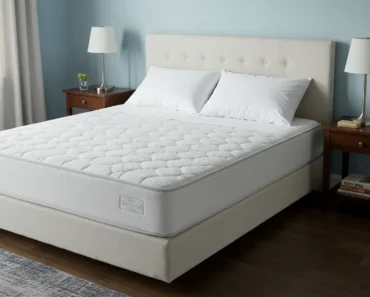The kitchen remains the heart of the home, continually evolving to meet modern demands for both beauty and function. This guide explores 11 Kitchen Trends emerging in 2025, where cutting-edge technology seamlessly blends with timeless design, offering inspiring ideas to transform your culinary space.
The Evolving Role of Kitchen Trends in 2025
Kitchens transcend simple cooking spaces; they act as centers for family life, entertaining, and even remote work. As lifestyles change, so do expectations for this vital room. The 11 Kitchen Trends for 2025 reflect a deeper understanding of efficiency, aesthetics, and sustainability. They aim to create spaces that are not only beautiful but also incredibly practical and adaptable.
These trends highlight a significant shift. Design now prioritizes longevity and smart integration. Homeowners seek kitchens that work harder and last longer. This involves selecting durable materials and incorporating technology that simplifies daily tasks. The focus moves towards solutions that improve the quality of life within the home.
Understanding these 11 Kitchen Trends helps homeowners, designers, and builders prepare for future living. They provide a roadmap for creating kitchens that remain relevant and functional for years. The blend of technology and classic aesthetics creates a sophisticated yet welcoming environment, perfectly aligned with modern demands.
Key Drivers Behind 11 Kitchen Trends for 2025
Sustainability and Wellness
Consumers increasingly prioritize environmental responsibility and personal well-being. This drives demand for sustainable materials, energy-efficient appliances, and designs that promote healthy living. Kitchen trends 2025 embrace recycled content, local sourcing, and non-toxic finishes. They also focus on natural light and biophilic design elements.
The kitchen becomes a sanctuary. It supports healthy cooking and offers a calming atmosphere. Design choices reflect an awareness of both ecological impact and human comfort.
Technology Integration
Smart home technology continues to evolve, creating seamless kitchen experiences. From intelligent appliances to integrated lighting and voice-activated controls, technology enhances convenience and efficiency. These innovations make daily tasks easier. They save time and resources.
The key lies in integration. Technology blends into the background, providing intuitive control without clutter. These advancements lead to smarter, more responsive kitchen spaces.
Flexibility and Adaptability
Modern living demands versatile spaces. Kitchen trends 2025 emphasize flexibility. This means modular components, multi-functional islands, and designs that adapt to various activities, including cooking, dining, working, and socializing. The kitchen serves multiple purposes throughout the day.
Designers create zones within the kitchen. Each zone serves a specific function. This adaptability allows the space to evolve with changing needs and lifestyles.
The 11 Kitchen Trends in 2025: Where Tech Meets Timeless Design
These specific trends shape the kitchens of tomorrow. They offer a blend of cutting-edge innovation and enduring appeal. Embrace these 11 Kitchen Trends to create a contemporary and functional space.
1. Smart Appliances and Connectivity Hubs
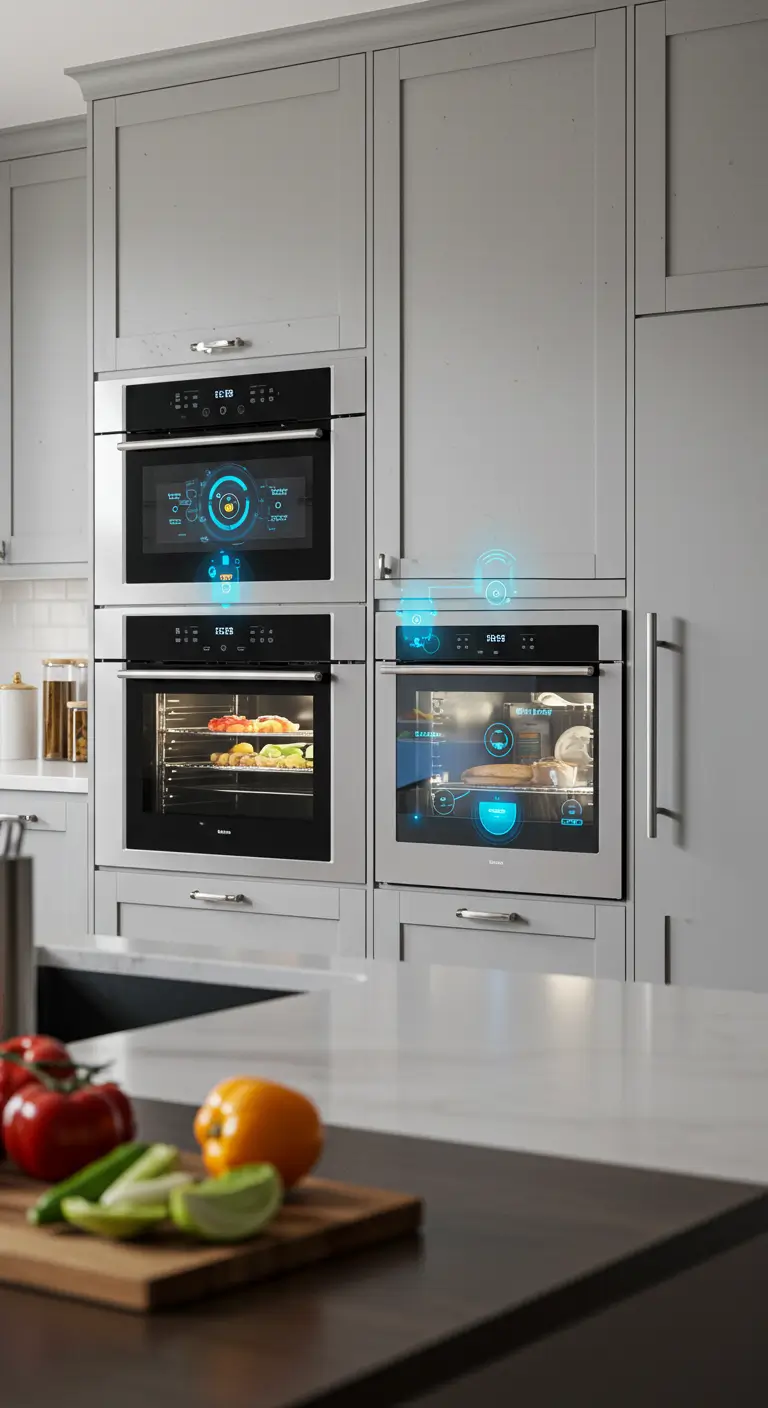
Kitchens in 2025 feature highly intelligent appliances. Refrigerators manage inventory, ovens preheat remotely, and dishwashers optimize cycles. These devices connect to a central hub, often voice-activated. This creates a fully integrated cooking environment. Users control their entire kitchen experience through intuitive interfaces.
This technology enhances efficiency. It simplifies daily tasks. Imagine an oven suggesting recipes based on fridge contents. These smart systems save time and reduce waste, transforming the kitchen into a seamless operation center.
2. Natural Materials and Biophilic Design
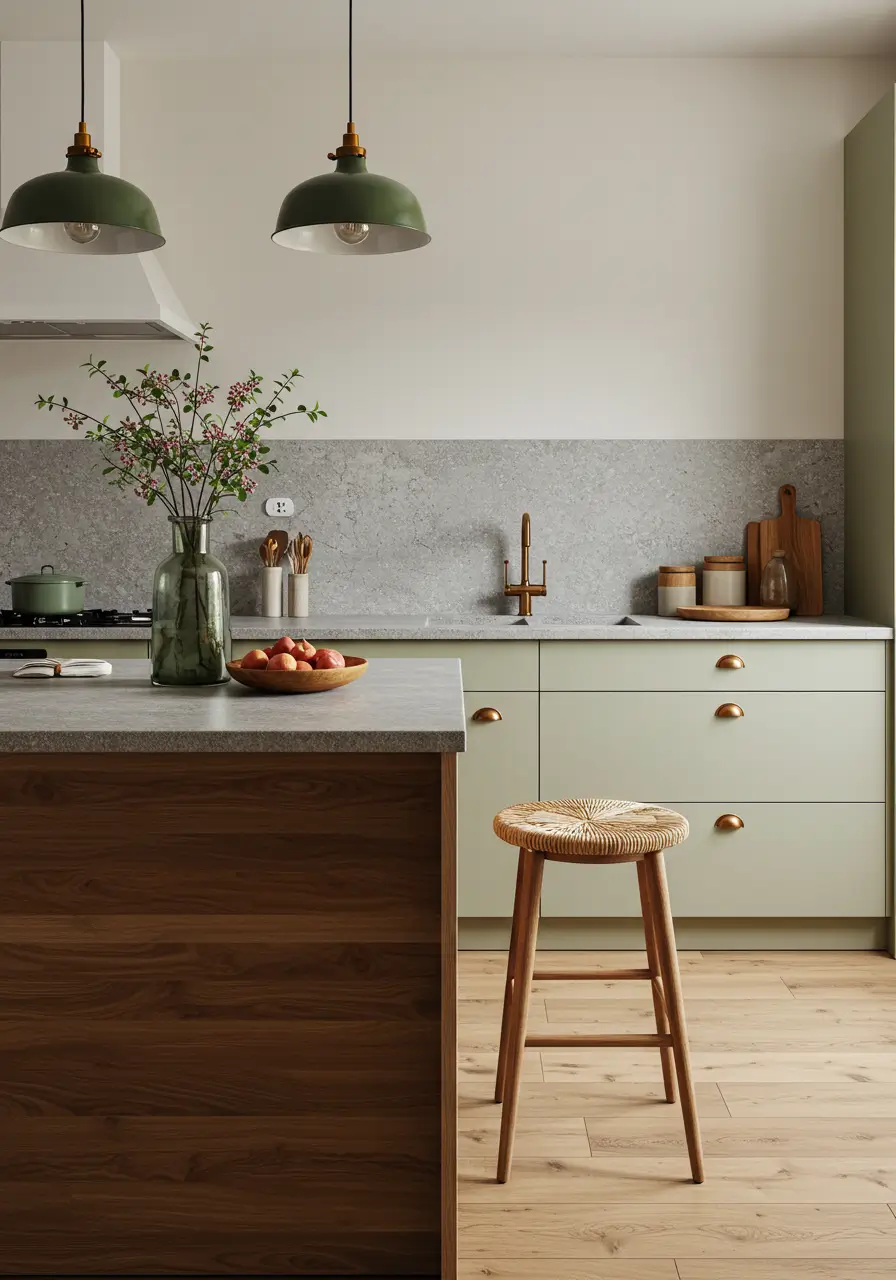
A strong move towards natural, tactile materials defines future kitchens. Wood, stone, and natural fibers take center stage. They bring warmth and authenticity to the space. Biophilic design elements, such as indoor plants, living walls, and designs that blur indoor and outdoor lines, enhance connection to nature.
This trend creates a calming, healthy environment. It focuses on well-being. The use of organic textures and natural light promotes a sense of tranquility, making the kitchen a more inviting space.
3. Zoned Kitchen Layouts
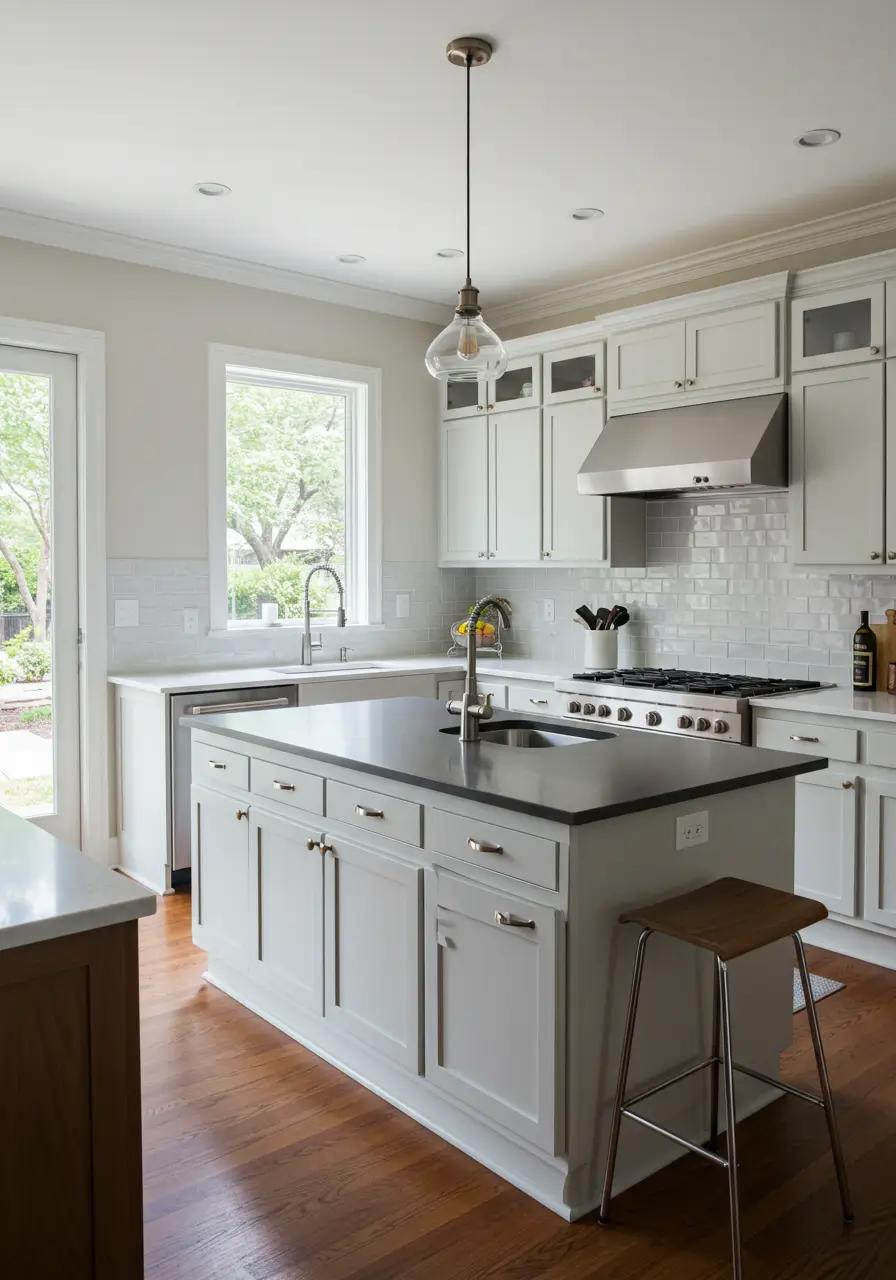
Kitchens move beyond the traditional work triangle. They embrace zoned layouts. This means dedicating specific areas for distinct tasks: a wet zone for washing, a dry zone for prep, a cooking zone, and a separate entertaining zone. This optimizes workflow and efficiency.
Zoning creates dedicated stations. Multiple people can work simultaneously without interfering with one another. This design improves functionality for busy households and makes the kitchen more adaptable.
4. Hidden Appliances and Minimalist Aesthetics
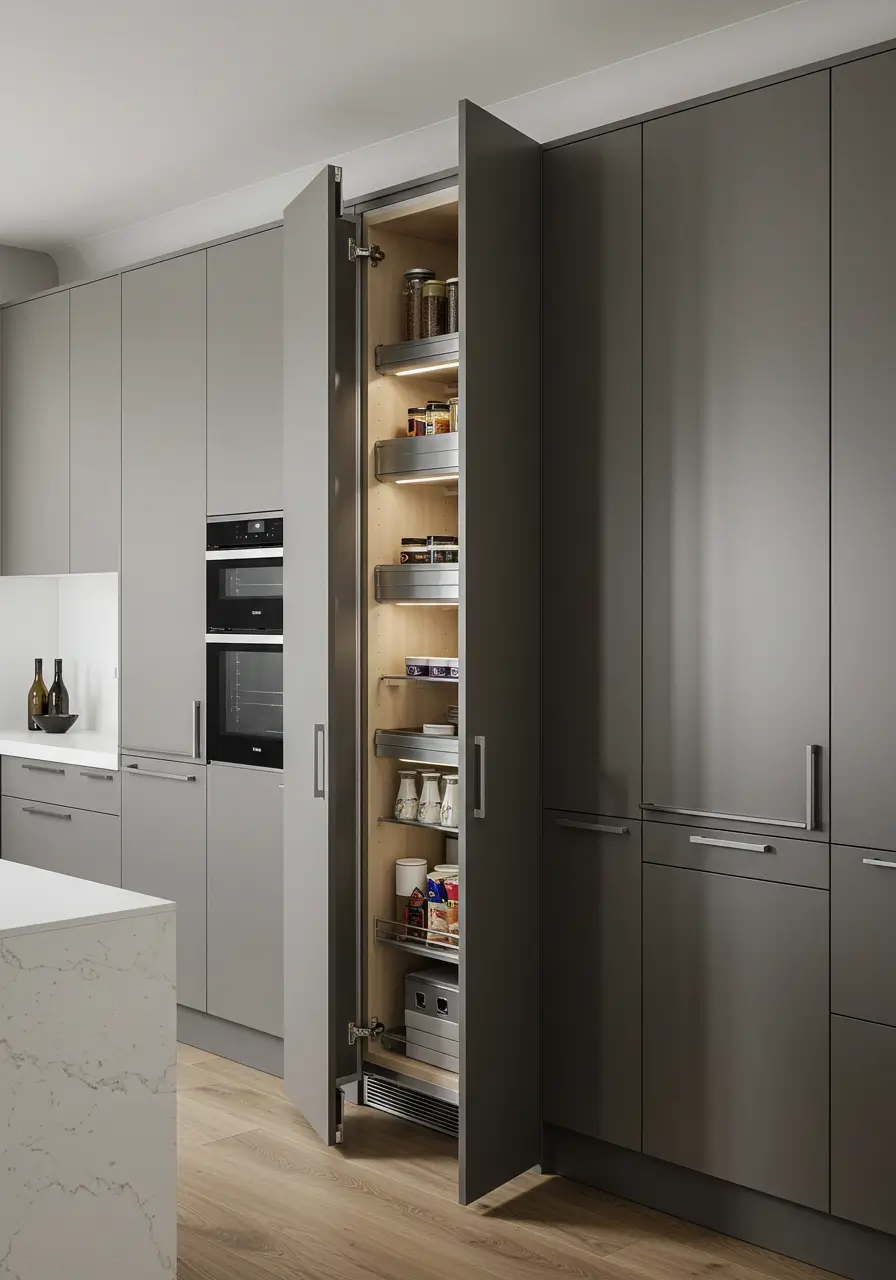
Clutter-free spaces remain a priority. Future kitchens feature hidden appliances and integrated storage solutions. Panel-ready refrigerators, concealed pantry systems, and pop-up outlets contribute to a seamless, minimalist aesthetic. This design promotes visual calm.
The focus remains on clean lines and uncluttered surfaces. Appliances disappear behind cabinetry. This creates a sleek, sophisticated look, reflecting a desire for simplicity and elegance.
5. Advanced Water Filtration and Dispensing
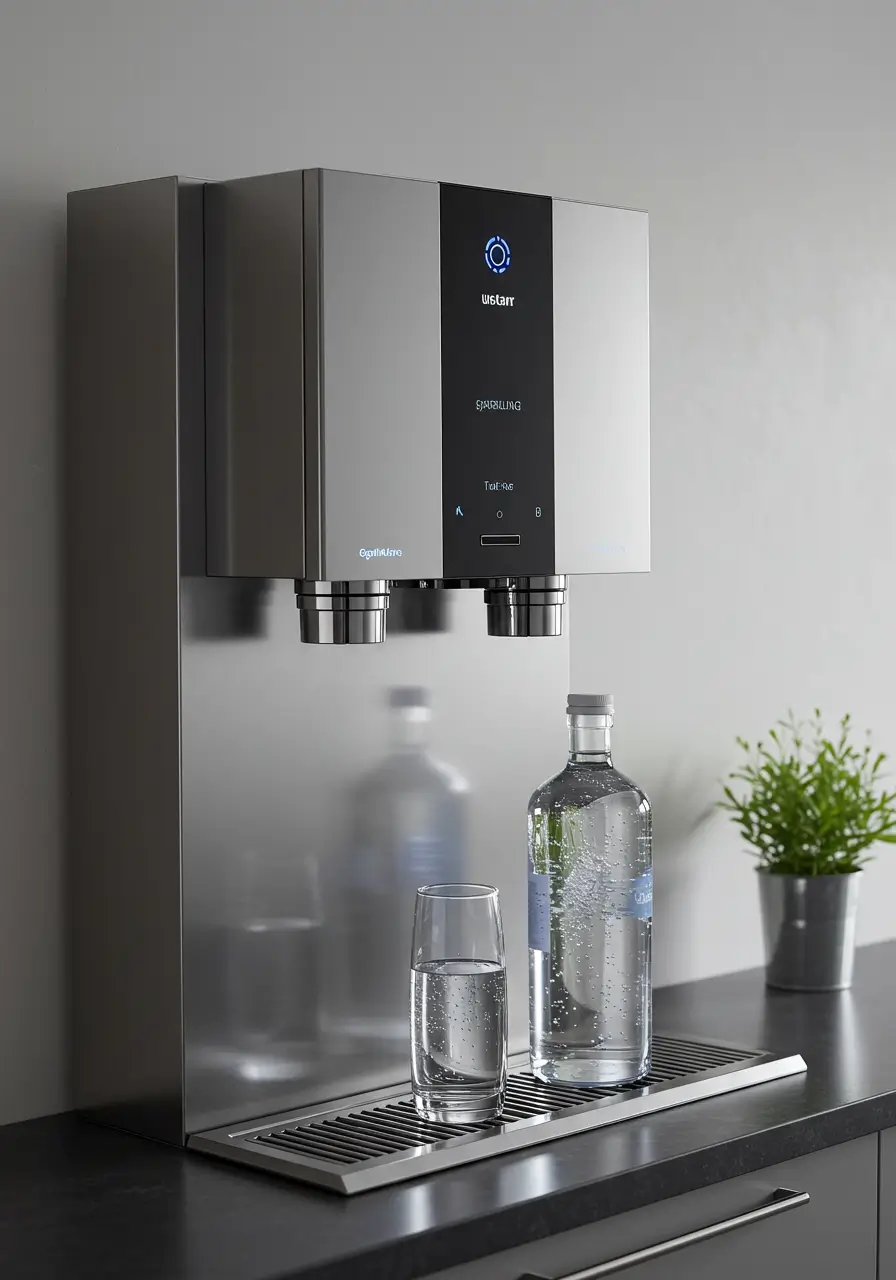
Beyond standard filtered water, kitchens integrate advanced water systems. These provide instant boiling, chilled, sparkling, or even infused water. This reduces reliance on bottled water and adds convenience. These systems offer purified water on demand.
These innovations highlight a growing emphasis on health and sustainability. They simplify hydration and food preparation. This thoughtful integration elevates everyday utilities.
6. Statement Backsplashes
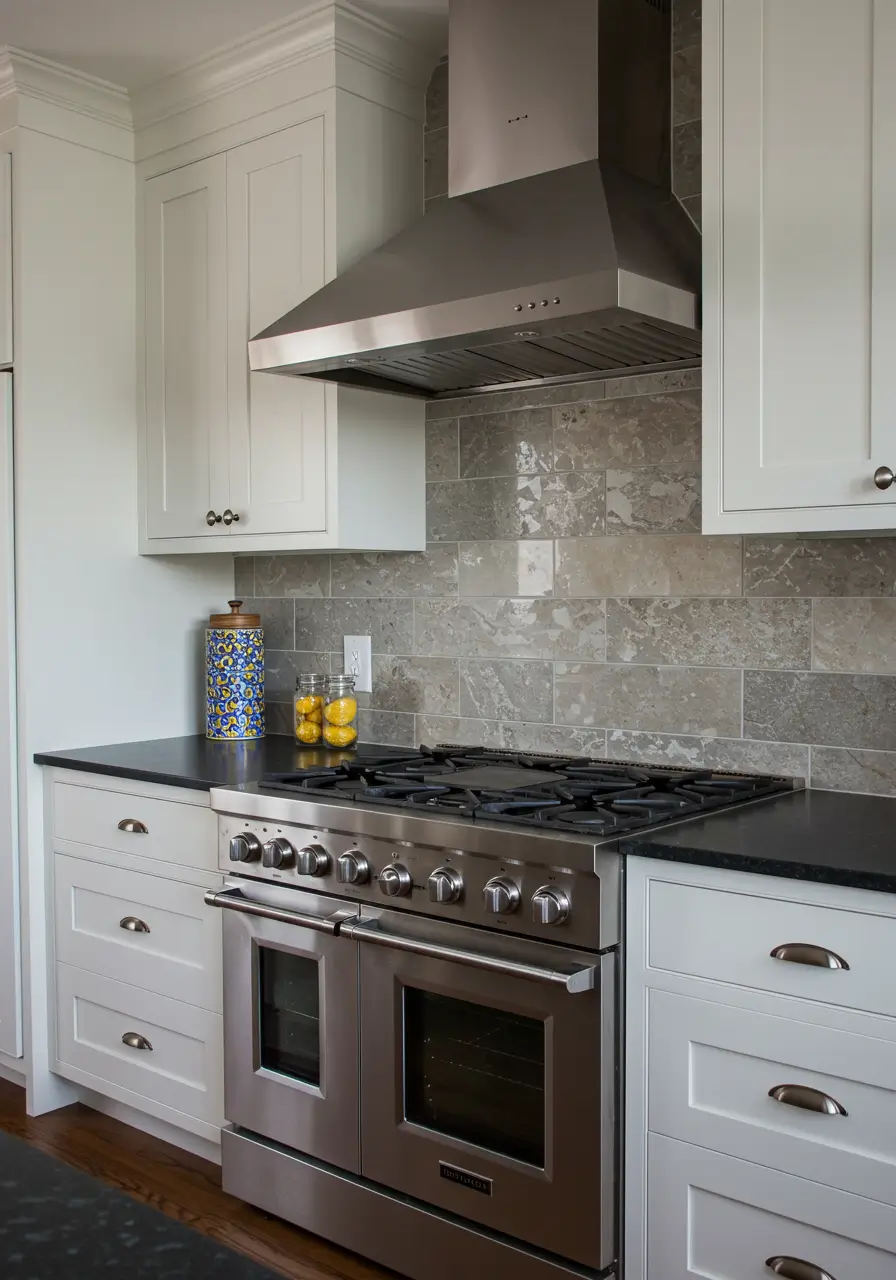
The backsplash becomes a focal point. Large format tiles, slabs of natural stone, or intricate patterns create visual impact. These bold choices act as art installations. They add personality and flair to the kitchen.
The backsplash moves beyond utilitarian protection. It becomes a design element that expresses individual style. This trend allows for artistic expression in a central area.
7. Darker Cabinetry and Rich Tones
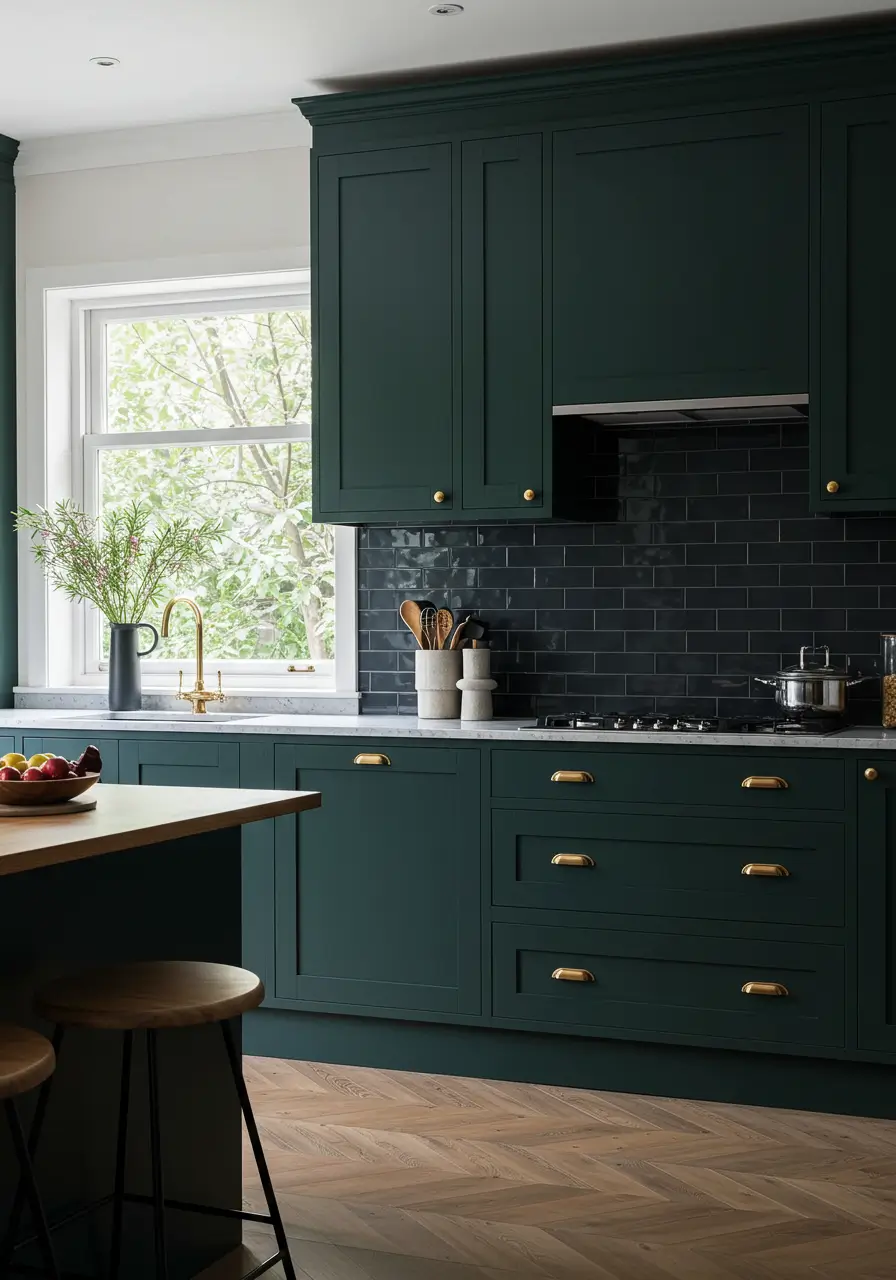
While white kitchens remain classic, 2025 embraces darker cabinetry and rich, saturated color palettes. Deep greens, navy blues, charcoal grays, and even black create a dramatic and sophisticated ambiance. These colors add depth and warmth.
This trend moves towards a more moody and intimate kitchen space. It provides a luxurious feel. Darker tones pair well with natural wood accents and metallic finishes, creating elegant contrasts.
8. Outdoor Kitchen Integration
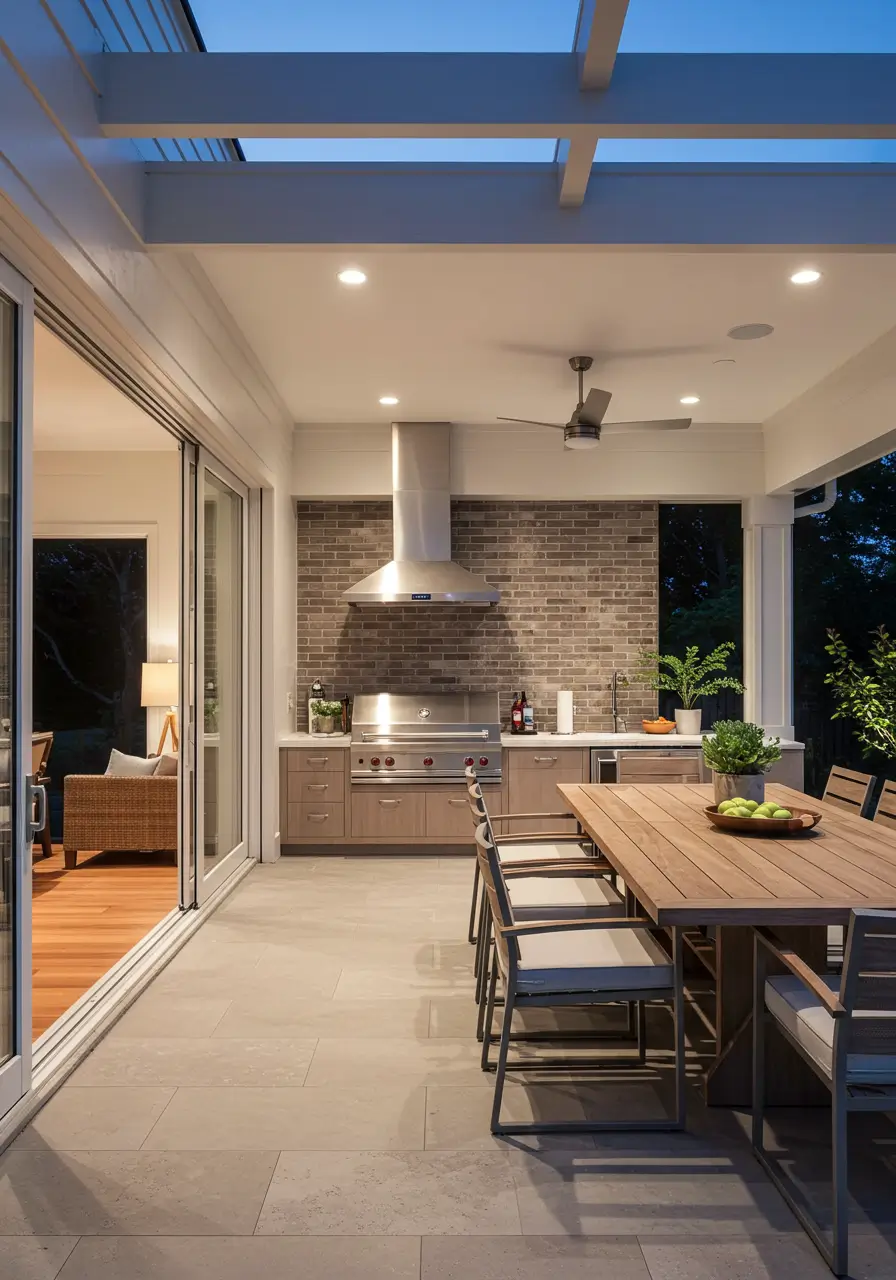
Seamless transitions between indoor and outdoor living areas continue to gain popularity. Outdoor kitchens evolve into fully equipped extensions of the indoor space. This includes dedicated cooking zones, seating areas, and even outdoor refrigeration. They become true entertainment hubs.
This trend maximizes usable living space. It offers opportunities for al fresco dining and entertaining. It blurs the lines between interior and exterior, providing a holistic living experience.
9. Dedicated Beverage Stations
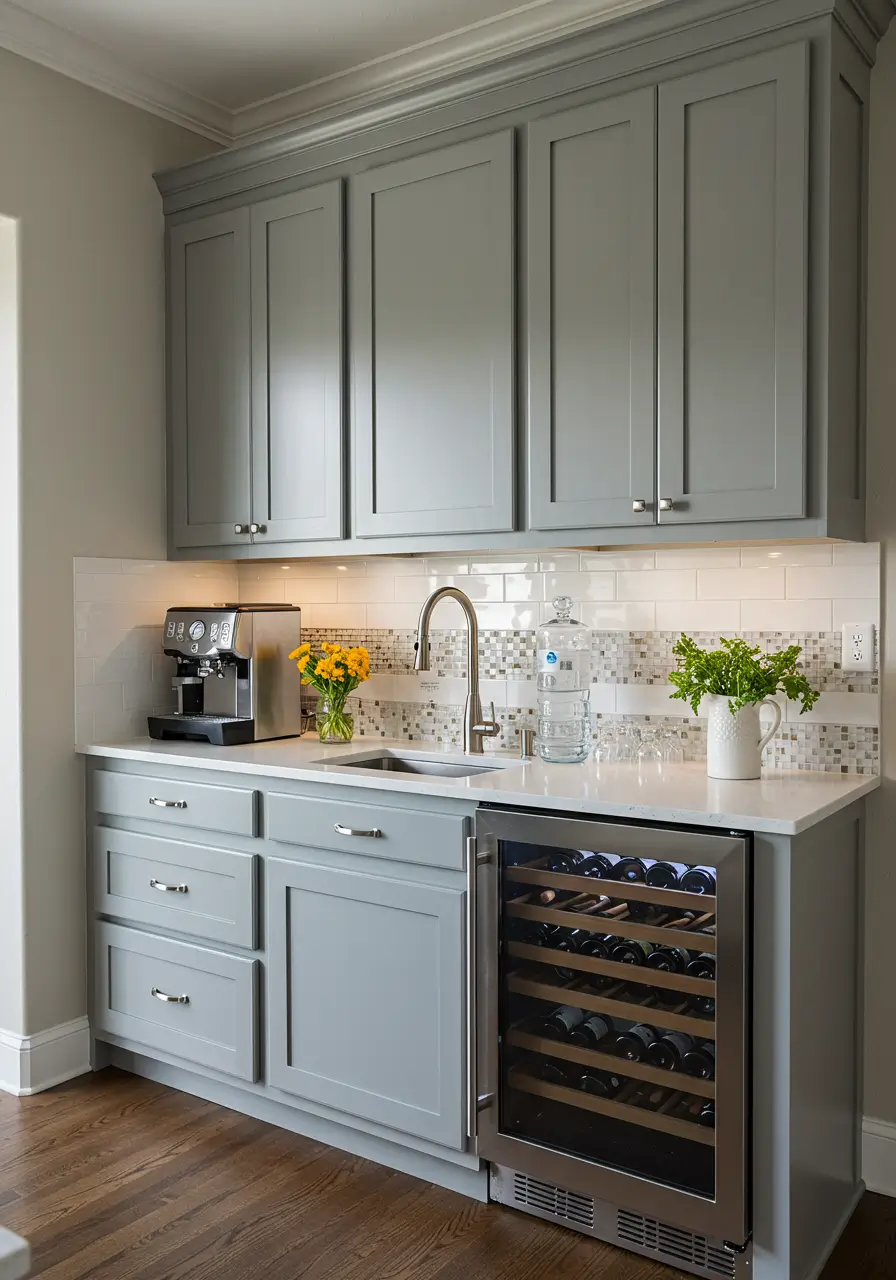
The rise of coffee culture and home entertaining leads to dedicated beverage stations. These specialized zones feature built-in coffee machines, wine coolers, mini-fridges, and filtered water taps. They cater to specific preferences and reduce countertop clutter.
These stations offer convenience. They allow hosts to prepare drinks without interfering with main cooking tasks. This trend enhances both functionality and entertainment capabilities.
10. Touchless Faucets and Smart Lighting
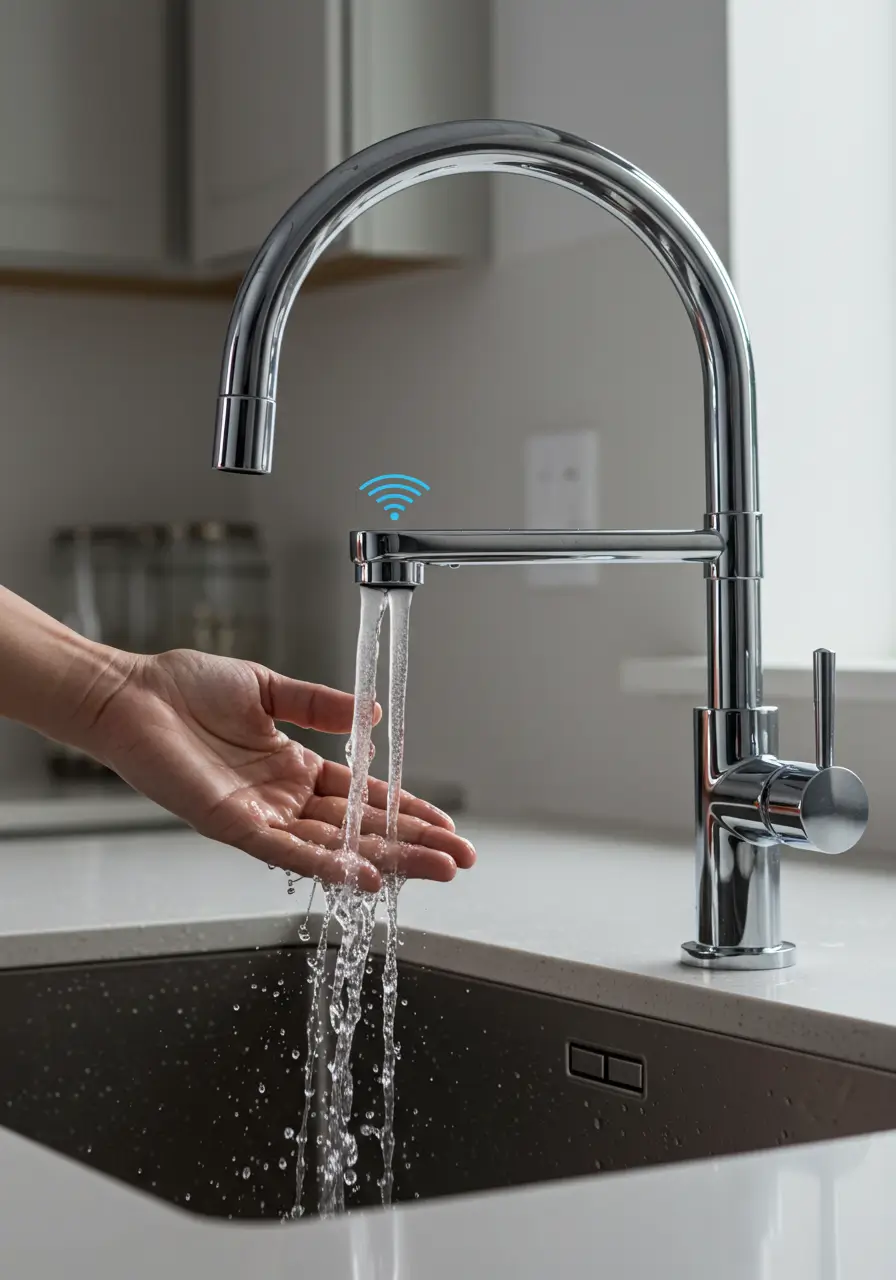
Hygiene and convenience drive the adoption of touchless faucets. Sensors activate water flow, reducing germ spread. Smart lighting systems offer customizable ambiance. They adjust brightness and color temperature. This adapts to time of day or activity.
These technologies enhance the user experience. They provide effortless operation and improve sanitary conditions. They represent simple yet impactful advancements in kitchen functionality.
11. Sustainable and Recycled Materials

An increasing focus on ecological impact drives material choices. Kitchens incorporate countertops made from recycled glass, cabinetry from reclaimed wood, and flooring from sustainable bamboo. These choices reduce environmental footprint. They also add unique character.
This trend aligns design with responsible consumption. It proves that beautiful kitchens can also be environmentally friendly. It encourages thoughtful material selection.
Related Posts: Stunning Kitchen Remodel Design Ideas for 2025
Integrating These 11 Kitchen Trends into Your Home
Adopting new kitchen trends does not require a complete overhaul. You can integrate many of these concepts through thoughtful updates. Consider what works best for your home and lifestyle.
Start with Small Updates
You do not need a full renovation to incorporate these 11 Kitchen Trends. Start with smaller updates. Replace your faucet with a touchless model. Add under-cabinet smart lighting. Introduce a living plant wall. These small changes update your kitchen’s feel and function.
Even changing your backsplash to a bold, statement-making design offers a significant visual impact. Gradual updates allow you to experiment with trends without a large commitment.
Prioritize Functionality
Before aesthetic choices, consider how your kitchen functions. Do you need more counter space? Better storage? Improved workflow? Trends should enhance functionality, not hinder it. A beautiful kitchen that does not work for your lifestyle ultimately disappoints.
Match trends to your specific needs. If you entertain often, a dedicated beverage station makes sense. If you cook daily, prioritize high-performance appliances and a well-zoned layout.
Balance Modern and Timeless Elements
The most enduring kitchens combine contemporary trends with timeless design principles. Do not let current fads dictate your entire design. Use classic materials like natural wood or marble. Incorporate smart tech. This creates a space that feels fresh yet endures the test of time.
This balance ensures your kitchen remains stylish for years. It avoids designs that quickly look dated. A timeless foundation allows for easy trend integration.
Budgeting for Your Kitchen Renovation or Update
The cost of kitchen updates varies widely. These 11 Kitchen Trends range from simple changes to major overhauls. Budgeting carefully helps you achieve your desired look.
Minor Updates (Under $5,000)
For smaller budgets, focus on impactful updates like new lighting, touchless faucets, or a refreshed backsplash. You can also add portable smart appliances. These changes offer significant improvements without a full renovation. They bring modern elements into your kitchen economically.
Consider painting existing cabinetry for a dramatic change. Adding a few key biophilic elements or upgrading your water filtration system also fits this budget.
Mid-Range Renovation ($5,000-$25,000)
A mid-range budget allows for more substantial changes. You can replace older appliances with smart, energy-efficient models. You can upgrade countertops to a durable, natural stone. This budget might also cover new flooring or a partial re-configuration of the layout. These updates significantly enhance functionality and aesthetics.
This level of investment allows for a more comprehensive integration of the 11 Kitchen Trends, creating a noticeably updated space.
Major Renovation ($25,000+)
A significant budget allows for a complete kitchen overhaul. This includes custom cabinetry, high-end smart appliances, extensive material upgrades, and major layout changes. You can create dedicated zones, integrate hidden appliances seamlessly, and install advanced water systems. This level allows for total transformation.
This investment creates a truly custom, high-performance kitchen. It fully incorporates the most advanced of the 11 Kitchen Trends, building a space that meets every need and desire.
Caring for Your Modern Kitchen
Proper care maintains the beauty and functionality of your kitchen. Regular maintenance ensures your investment in these 11 Kitchen Trends serves you well for years. Simple habits preserve surfaces and keep appliances running efficiently.
Regular Cleaning and Maintenance
Clean surfaces regularly using appropriate cleaners for your materials (e.g., stone cleaner for granite). Wipe down appliances after use. Attend to spills promptly to prevent stains. This keeps your kitchen looking fresh and prolongs the life of finishes.
For smart appliances, follow manufacturer guidelines for software updates and cleaning. Keep sensors clear for optimal performance. Regular cleaning ensures hygienic cooking.
Appliance Care and Longevity
Properly maintain your smart appliances. Clean filters in dishwashers and range hoods. Defrost freezers as needed. Consult user manuals for specific care instructions. Regular maintenance prevents breakdowns and extends appliance lifespan.
Consider professional servicing for complex smart appliances. This ensures they operate efficiently and safely. A well-maintained kitchen functions smoothly and reduces future costs.
Latest Innovations Influencing 11 Kitchen Trends
The kitchen industry continuously innovates, bringing new technologies and creative solutions. These advancements enhance convenience, sustainability, and design flexibility, shaping the future of cooking and living spaces.
Personalized User Experiences
Beyond smart appliances, the next wave of innovation focuses on personalized user experiences. AI-powered systems learn your cooking habits. They suggest recipes. They even order groceries automatically. This creates a truly bespoke kitchen environment.
Voice control becomes more sophisticated. It handles complex commands and anticipates needs. This level of personalization transforms how you interact with your kitchen.
Advanced Material Science
Material science introduces innovative surfaces. Self-cleaning countertops, antimicrobial finishes, and ultra-durable composites simplify maintenance and improve hygiene. These materials offer enhanced performance and longevity.
New eco-friendly materials also emerge. Recycled plastics, bio-based resins, and innovative wood alternatives offer sustainable choices without compromising on aesthetics or durability. This expands options for green kitchens.
Modular and Customizable Systems
The trend towards flexibility drives modular kitchen systems. These allow homeowners to easily reconfigure layouts, add or remove components, and adapt the space to changing needs. This provides unparalleled customization.
Modular designs offer flexibility. They cater to varied living situations. They simplify future updates or renovations. This approach makes kitchens truly adaptable to individual lifestyles.
Making Your Final Decision on 11 Kitchen Trends
Choosing which of the 11 Kitchen Trends to adopt requires careful consideration. Focus on selecting features that align with your lifestyle, budget, and long-term vision for your home.
Prioritize functionality and durability. A kitchen serves as a highly active space. Invest in elements that withstand daily use and simplify your routines. Trends should enhance practicality, not just aesthetics.
Consider your personal style. While modern trends offer inspiration, ensure your choices reflect your taste. A timeless design with integrated technology provides enduring appeal.
Do not overlook the importance of professional advice. Consult with experienced kitchen designers or contractors. They guide you through material selection, layout optimization, and appliance integration. Their expertise ensures a successful project.
Remember, the best kitchen is one that truly supports your life. When your culinary space blends thoughtful design, smart technology, and personal comfort, you create a home that functions beautifully.
Transform Your Home with These 11 Kitchen Trends
The 11 Kitchen Trends for 2025 offer a powerful blueprint for transforming your culinary space. They merge technological innovation with timeless design principles, creating kitchens that are both beautiful and highly efficient.
Take time to explore these trends. Consider how they integrate with your home’s overall aesthetic and your family’s needs. Remember that a well-designed kitchen enhances your daily life and increases home value.
As you plan your next kitchen project, remain open to new ideas and sustainable solutions. Your kitchen journey reflects a constant process of creating a space that serves you well.
By embracing these 11 Kitchen Trends, you build a functional, stylish, and future-ready kitchen. Prepare for a culinary space that inspires creativity, fosters connection, and elevates your home experience.
Frequently Asked Questions About 11 Kitchen Trends
What is the most important of the 11 Kitchen Trends for 2025?
The most important trend often involves smart technology integration. Smart appliances and connected systems improve efficiency and convenience. They allow for seamless control and automation, making daily tasks easier and kitchens more responsive to user needs.
Are dark kitchens a passing trend?
While white kitchens remain classic, darker cabinetry and rich tones represent an enduring shift. They offer sophistication and depth. Dark kitchens create a luxurious, intimate ambiance that appeals to many homeowners. They stand as a timeless choice for many.
How can I make my kitchen more sustainable?
You can make your kitchen more sustainable by choosing energy-efficient appliances, using sustainable or recycled materials for countertops and cabinetry, and installing advanced water filtration systems to reduce bottled water use. Focus on natural light and good ventilation.
What does “zoned kitchen layout” mean?
A zoned kitchen layout involves dividing the kitchen into specific areas for different tasks. This includes a dedicated prep zone, cooking zone, cleaning zone, and potentially an entertainment or beverage zone. It improves workflow and allows multiple people to use the kitchen efficiently.
How much does it cost to implement these kitchen trends?
The cost varies significantly. Minor updates like smart lighting or a touchless faucet can be under $5,000. Mid-range renovations involving new appliances or countertops might range from $5,000-$25,000. Major overhauls incorporating custom designs and high-end tech can exceed $25,000.
